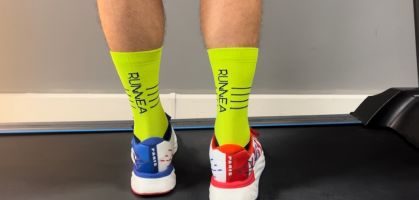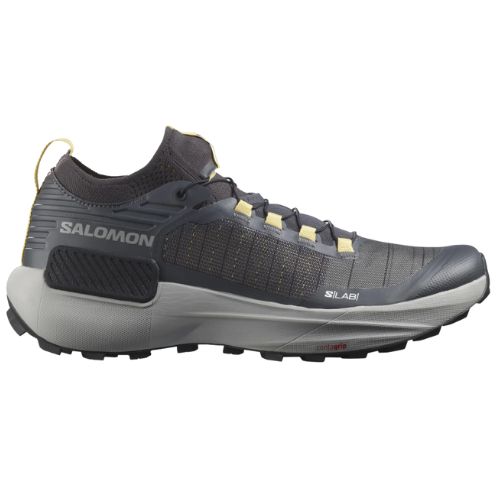We didn't get off to a good start with the headline, "Hot or cold shower after going for a run Which is better?" because one option excludes the other, and that's not the point. Side effects of SEO and more species. But one is not better than the other, nor vice versa Let's be clear! So our goal with this post is to expose you to what it is useful for you and at what time you can opt for the cold shower or hot shower after your workouts. Or also resort to contrast baths, if you dare.
The first thing to say is that there are certain studies, and voices, that are in favor of the cold shower, and there are also those that extol the positive effects of hot showers after going for a run. For example, speaking of the recovery process, hot water tends to relax the muscles, while baths with cold water - even that of getting into a pool with ice(cryotherapy) - can help you eliminate lactic acid impurities.
- You may be interested in: Start running again, 15 basic commandments.
Given that both hot and cold water have their own benefits, perhaps the most advisable route is to opt for contrast baths, which, apparently and as has been shown, do have direct effects on the athlete's recovery. But we will talk about that later, and we will not lose the focus of what concerns us: cold water showers and hot water showers... When and why?

Why opt for a cold shower or a hot shower after a run?
At this point, we start at the end, and before underlining the benefits of one or the other option, we look at some aspects that must also be taken into account. In this regard, concepts that may be familiar to you appear on the scene: vasoconstriction, associated with cold showers; and vasodilation, associated with hot showers.
Vasoconstriction produces a contraction of the blood vessels that raises blood pressure and is preceded by a drop in body temperature. Blood flow is then directed towards the vital organs, while the muscles are left, more or less alone, to cope with the accumulation of lactic acid.
Vasodilation, on the other hand, has the opposite effect, and what it does is dilate the blood vessels, increasing blood pressure and causing blood flow to vaya more directly to the muscles, which means that the lactic acid is more dispersed, reducing the sensation of pain and fatigue.
In short, and simplifying the subject, cold showers can help you recover damaged tissues, while hot showers help you relax and release tension in your muscles.
Benefits of cold and hot showers
If we contrast the cold water shower with the hot water shower, the benefits of each of the two options can be summarized in the following lists:
Benefits of cold water showers
- Stimulates the immune system and improves blood circulation.
- Increases the body's alertness.
- Boosts antidepressant hormones.
- Accelerates metabolism.
- Favor the weight loss process.
- Contribute to skin and hair care.

Benefits of hot showers
- Relaxes muscles and improves recovery.
- Reduces body tension and stress.
- Reduces cold and cough symptoms by opening the airways and clearing the nasal passages.
- Relieves migraine symptoms.
- Reduces inflammation.
- It calms anxiety.
So the best option is to evaluate what is your physical and mental state at the specific moment before entering the shower, and choose one or another option depending on the benefits you want to look for.

Contrast baths: The best option that you should not discard?
We have left it for the end, because let's say that it is the intermediate option, and the one that, in principle, you could get more out of, since it focuses on finding a balance: warm water showers, or the well-known contrast baths.
The contrast baths derive from a millenary technique, developed by the German naturopathic doctor, Sebastian Kneipp, one of the great precursors of hydrotherapy, and also that has given name to theso-called "Kneipp Cure", natural medical system focused on applying: Hydrotherapy, physical exercise, nutritional therapy, phytotherapy (medicinal herbs) and spirituality.
https://es.wikipedia.org/wiki/Sebastian_Kneipp
As its name indicates, it consists of creating a contrast by alternating short exposures on cold water and hot water, alternating them. And its benefits, although already highlighted, are the following:
- Stimulate blood circulation.
- Activates and stimulates the immune system.
- Prevents Delayed Onset Muscle Soreness (DOMS), the famous stiffness, which are not pink.
- They can help fight depression.
- They contribute to weight loss.

How to apply the correct technique of contrast showers?
There is no great mystery, but it is true that it is necessary to apply them well, in a correct way, to obtain the maximum effectiveness. As simple as following these steps:
First shower with warm/hot water for 3 to 5 minutes.
Second shower with cold water for 1 minute.
Repeat the cycle 3 to 5 times.
There are three keys to the effectiveness of contrast baths:
- The first is to always finish with the cold water shower.
- The second is that the temperature difference between the hot and cold water must be as high as possible to generate the contrast.
- Third, hot showers should last longer than cold showers.
That said, you will feel like new, and of course you will contribute to a better and faster recovery, even from your most demanding running workouts Which one do you opt for?
Read more news about: Running Training






















